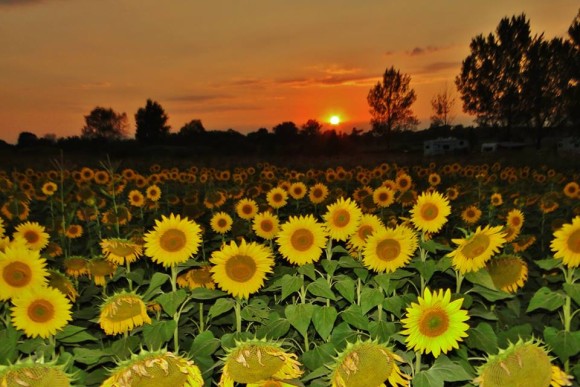
Hi, everybody. EarthSky goofed on this one! Our apologies. We had originally posted a photo that we thought represented confused sunflowers – sunflowers pointing in multiple directions – during the August 21, 2017 solar eclipse. Apparently, we were wrong.
According to the Biology Department at the University of Indiana, the process by which some plants track the motion of the sun across the sky is called solar tracking or heliotropism. However, they explained:
Many people are under the misconception that the flower heads of the cultivated sunflower (Helianthus annuus) track the sun. Certainly, when you see a field of cultivated sunflowers, the flower heads face in more-or-less the same direction. However, if you view a field of sunflowers in the afternoon, it will be apparent that the flower heads are mostly facing east, where the sun rises each morning …
Immature flower buds of the sunflower do exhibit solar tracking and on sunny days the buds will track the sun across the sky from east to west and by dawn the buds will have returned to face eastward, like the leaves in the movie above. However, as the flower bud matures and blossoms, the stem stiffens and the flower becomes fixed facing the eastward direction. Flowers of the wild sunflowers seen on roadsides do not follow the sun and their flowering heads face many directions when mature. However, their leaves exhibit some solar tracking.
Unlike the sunflower flower, the flowers of some plant species track the sun across the sky from east to west. A good example of this is the alpine plant, the snow buttercup (Ranunculus adoneus). By facing the sun, the flowers of the snow buttercup are able to collect heat from the sun. The heat is thought to help pollination since the insect pollinators will warm and be able to fly better in the cold air and deliver pollen more effectively to other plants. The warmth also appears to help the pollen germinate after it is delivered to another flower.
Thank you to everyone who commented, and sorry about our error!
– EarthSky Team











